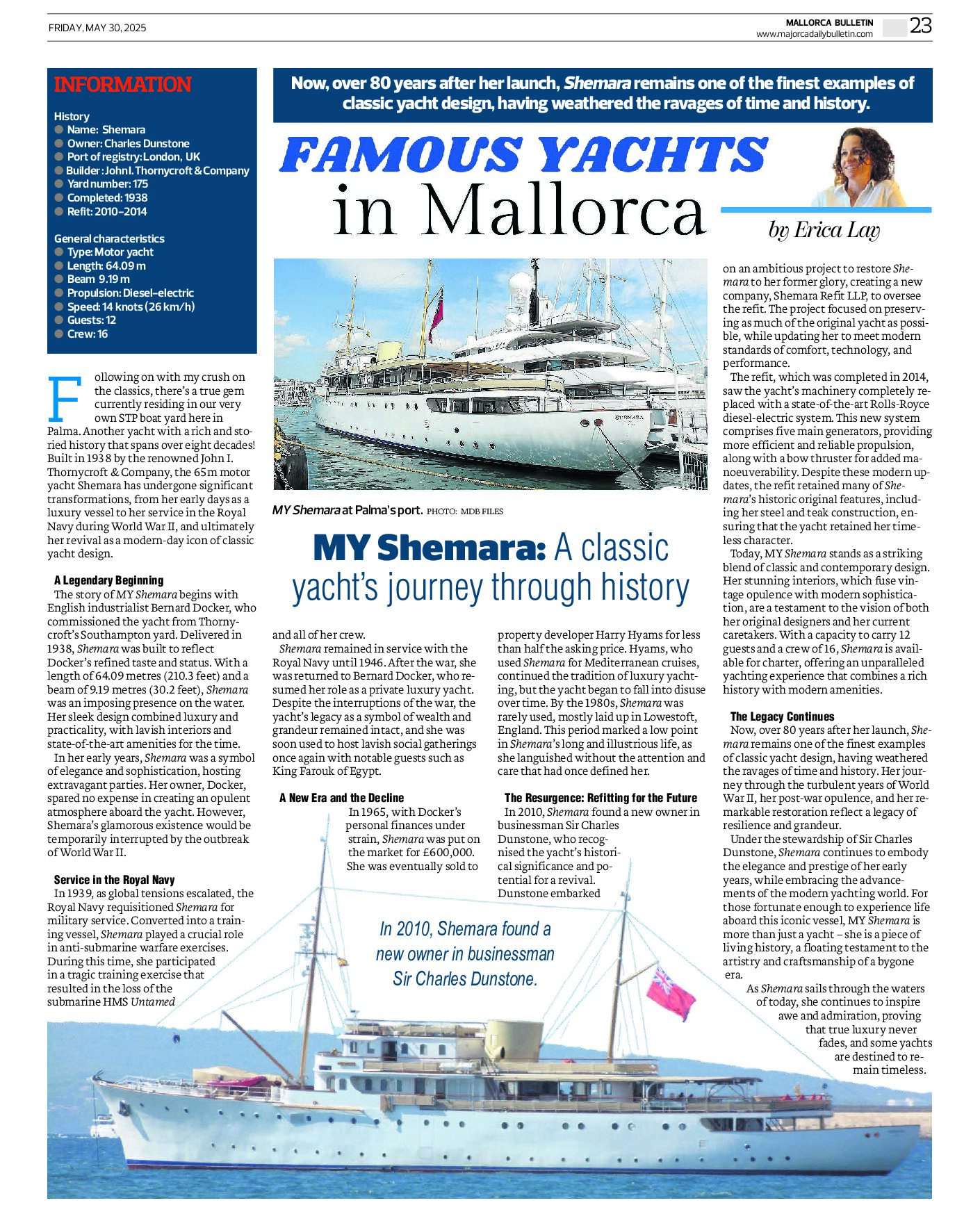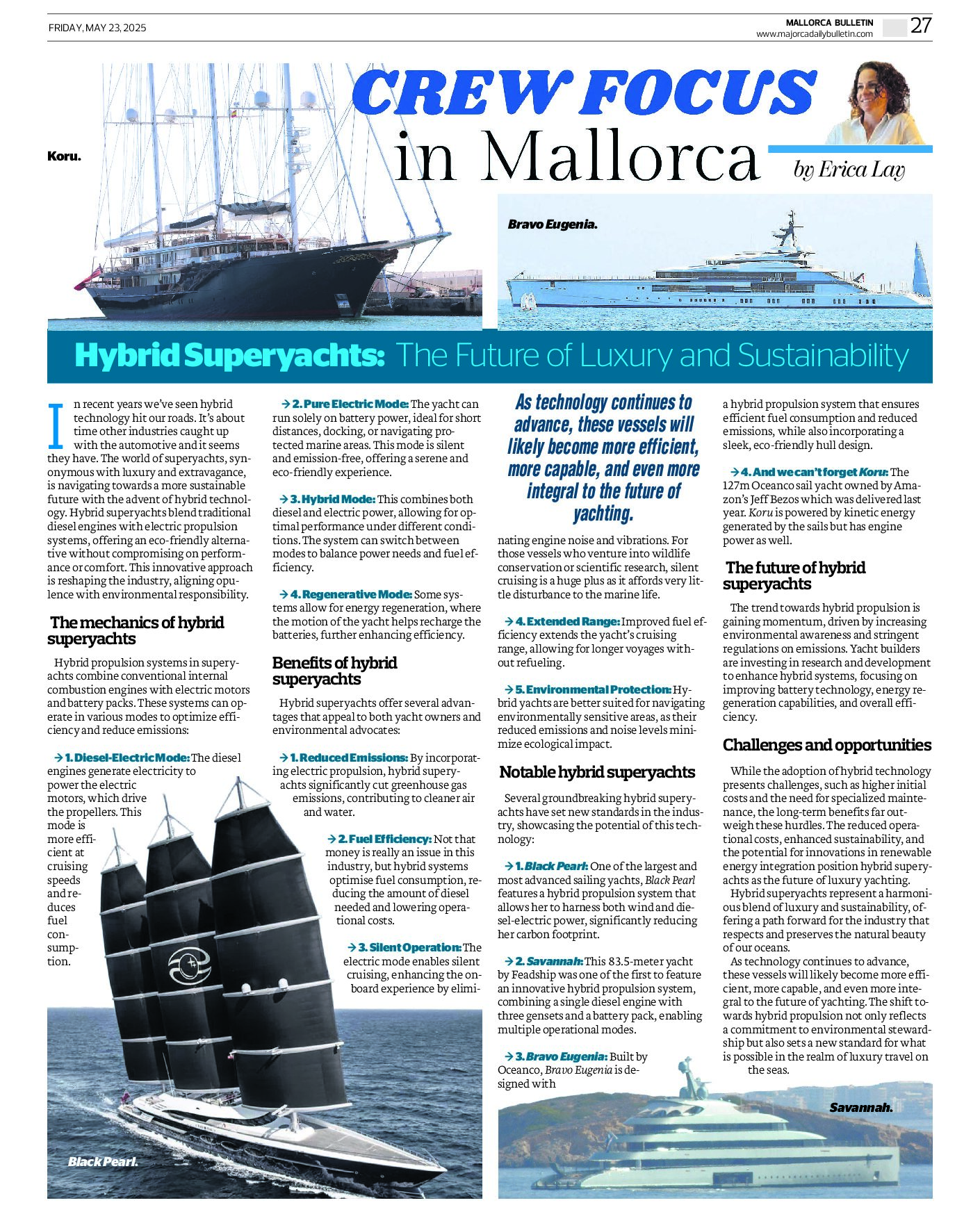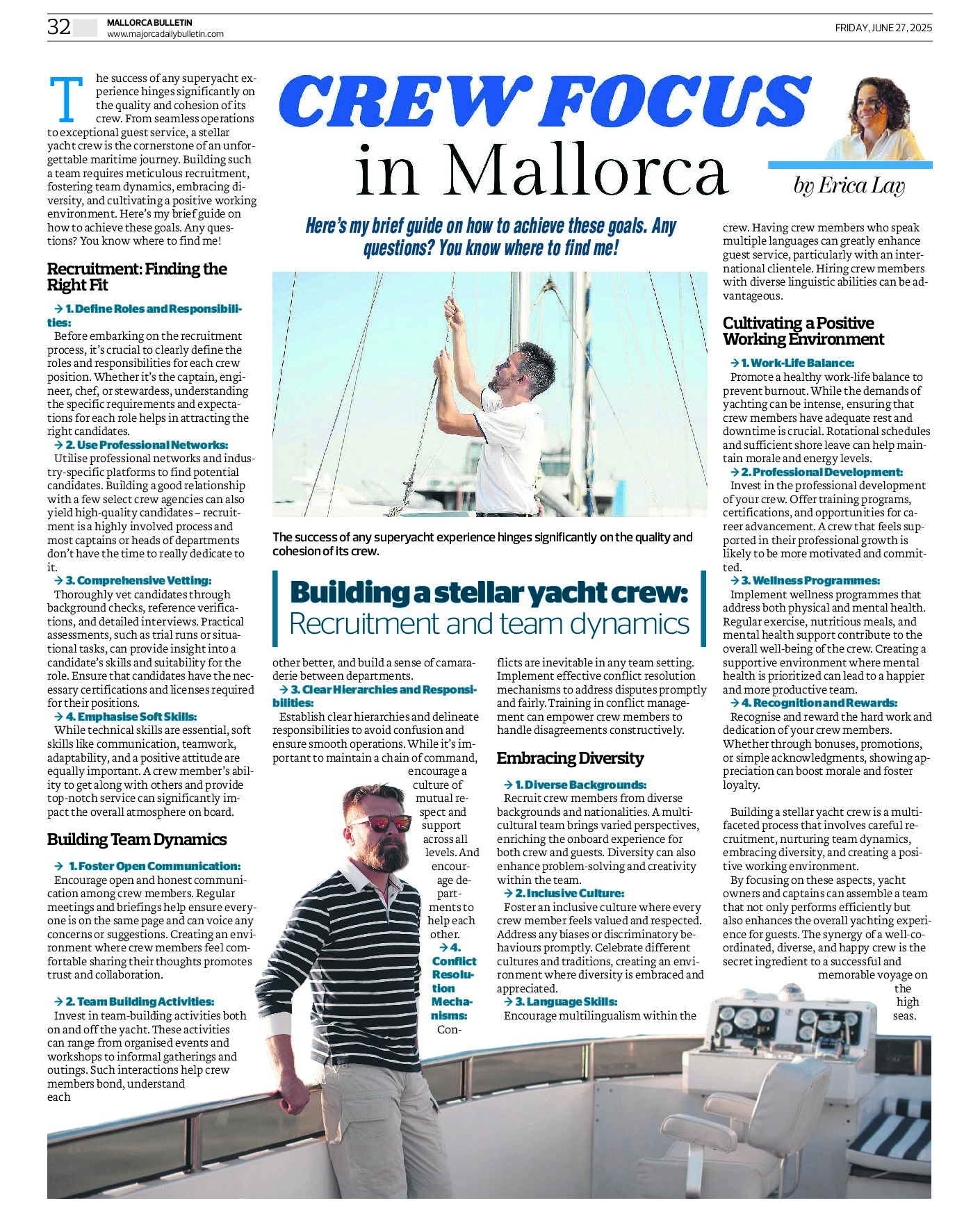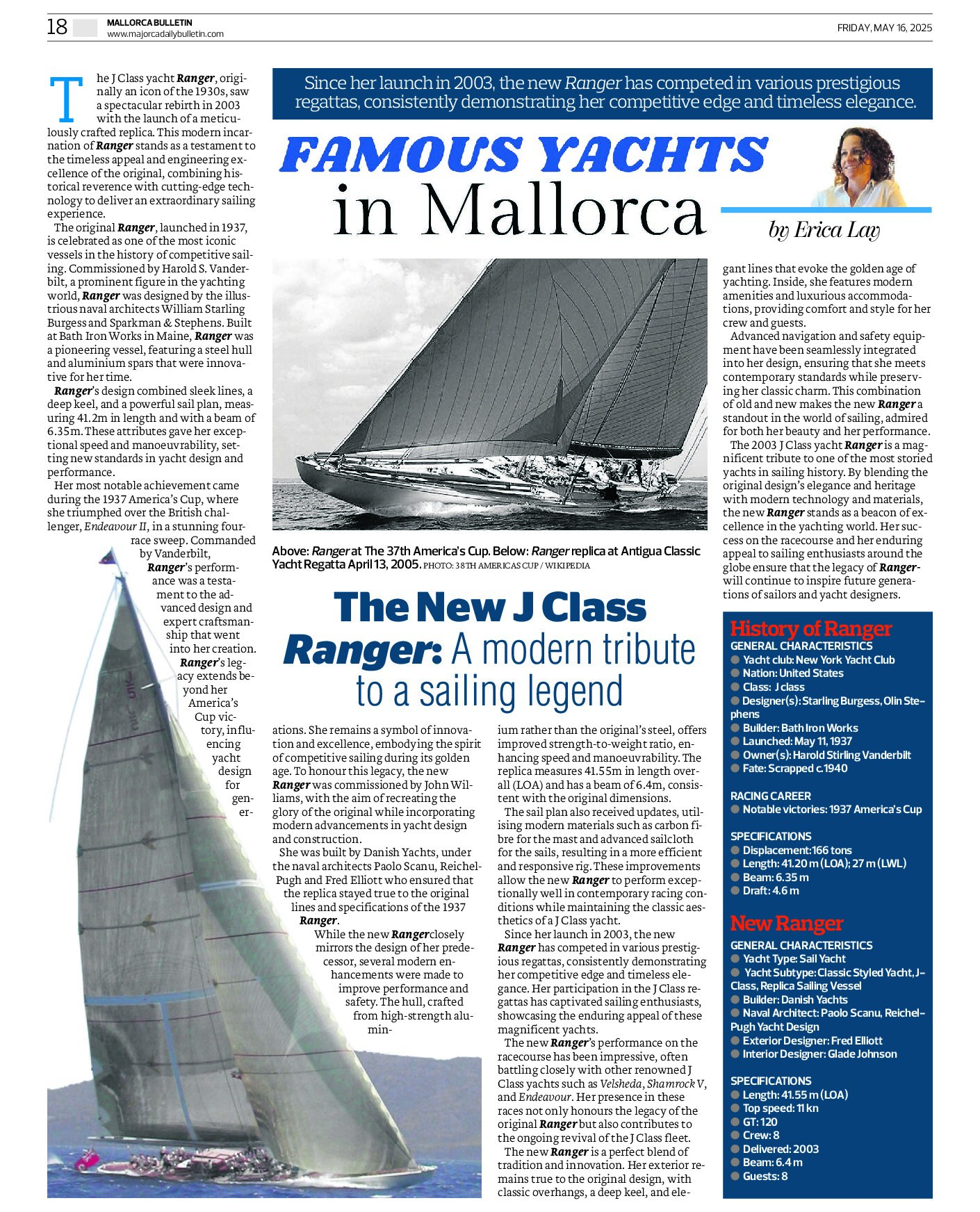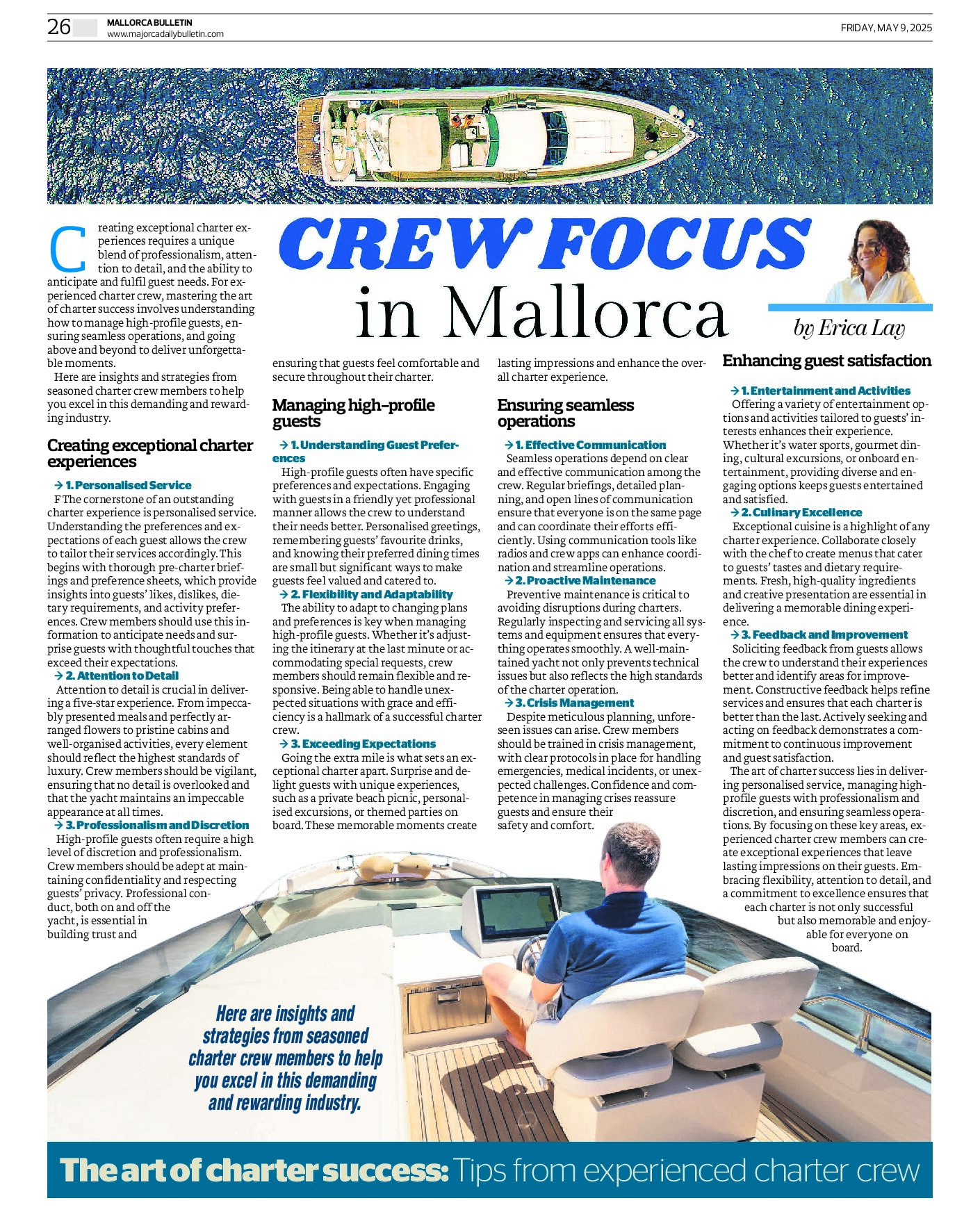Navigating Superyacht Technology
With Courtesy of Erica Lay & The Mallorca Bulletin. #25/1017.
Erica Lay owner of EL CREW International Yacht Crew Agency http://www.elcrewco.com/ erica@elcrewco.com
Navigating Superyacht Technology: A Guide for Wannabe Tech-Savvy Crew
Superyacht technology can sometimes feel like a maze of buzzwords and high-tech jargon, but understanding the basics is crucial for anyone working in or curious about the industry. In this article, we’re cutting through the noise to offer a straightforward introduction to essential superyacht technology. From navigation systems to communication tools, we’ll break down the fundamentals to help you get a clear picture of how these systems work together to ensure smooth operations, safety, and guest satisfaction—whether you’re a junior crew member, a new yachtie, or simply someone eager to learn. Let’s dive in!
Advanced Navigation Systems
Electronic Chart Display and Information System (ECDIS)
ECDIS is a state-of-the-art navigation system that has become a staple on modern superyachts. It replaces traditional paper charts with digital versions, providing real-time data and integration with other navigational aids. ECDIS enhances route planning, monitoring, and decision-making, ensuring safe and efficient navigation. Tech-savvy deck crew should be proficient in using ECDIS, as it is critical for accurate and dynamic voyage planning. It forms part of the OOW 3000gt syllabus for deck officers.
Integrated Bridge Systems (IBS)
IBSs combine multiple navigational and control systems into a single, cohesive interface. This integration includes radar, autopilot, engine controls, and communication systems. IBS streamlines operations, reduces the workload on the bridge, and enhances situational awareness. Simply put, IBS optimises navigation and operational efficiency.
Dynamic Positioning Systems (DPS)
DPS is something usually only found on the very large yachts, and it allows them to maintain a fixed position automatically by using thrusters and propellers. This technology is invaluable in situations where anchoring is not feasible or when precision is required, such as during diving operations or in congested ports. DPS is a big thing on commercial vessels, like the big tankers and cruise ships you see in the bay of Palma.
Communication Tools
VSAT (Very Small Aperture Terminal)
VSAT technology provides high-speed satellite internet access, essential for maintaining communication with the shore and other vessels. It supports various applications, from VoIP and video conferencing to real-time data transfer. On very large yachts you’ll find a dedicated crew member called an ETO (Electro Technical Officer) responsible for this, and on smaller yachts it’s the headache of the engineers. VSAT systems are super important to ensure continuous and reliable connectivity, which is vital for both operational purposes and guest services. Especially when the boss is watching their favourite sports team playing…
Advanced VHF and UHF Radios
Modern VHF and UHF radios offer enhanced features such as GPS integration, digital selective calling (DSC), and encryption for secure communications. These radios are critical for safe navigation, emergency responses, and daily operations. All crew members should be skilled in using these advanced communication tools to maintain clear and effective communication across the vessel and during emergency situations. The RYA VHF course is regarded as a cornerstone of maritime safety and communication training.
Crew Communication Apps
Many yachts now use WhatsApp groups to keep everyone in the loop, it’s a discrete and convenient tool to share updates, schedules, or non-urgent info. However, traditional radios remain the backbone of immediate communication on board. They are indispensable during critical operations such as manoeuvres, safety procedures, and of course, for guest requests. Some yachts are also adopting other crew management platforms and apps which integrate scheduling, task management and real-time updates – basically a one-stop shop to help the vessel crew operate smoothly.
Smart Solutions for Efficiency and Guest Satisfaction
Internet of Things (IoT)
IoT technology connects various devices and systems on board, enabling real-time monitoring and control. From HVAC systems and lighting to security cameras and maintenance alerts, IoT enhances operational efficiency and proactive maintenance. Crew members should understand IoT applications to optimise energy usage, improve safety, and enhance the overall guest experience.
Entertainment Systems
State-of-the-art entertainment systems, such as 4K televisions, immersive audio systems, and smart integration, elevate the guest experience. Systems like Crestron and Control4 offer centralised control of entertainment, lighting, and climate.
Environmental Control Systems
Advanced environmental control systems monitor and regulate indoor air quality, temperature, and humidity. These systems ensure optimal comfort for guests and reduce the yacht’s environmental impact. Understanding the operation and maintenance of these systems is crucial for crew members, as it directly affects guest satisfaction and sustainability efforts.
Enhancing Safety and Security
Automated Safety Systems
These include fire detection and suppression, bilge monitoring, and alarm systems, and are integral to modern superyachts. These systems provide early warnings and automatic responses to potential hazards, enhancing overall safety. Crew members should be proficient in monitoring and understand how to respond to these systems to ensure the vessel’s safety and compliance with safety regulations.
Cybersecurity Measures
As superyachts become increasingly connected, cybersecurity is a growing concern. Protecting the vessel’s digital infrastructure from cyber threats is essential. This includes securing communication networks, navigation systems, and guest data. Crew members must be knowledgeable about cybersecurity best practices and protocols to safeguard against cyberattacks. On mega yachts, in addition to the ETO role you may hear about ITOs – Information Technology Officers, who are dedicated to the yacht’s computer systems and servers.
So there you have it, a brief intro to some of the many techy bits and pieces we have on board superyachts!


